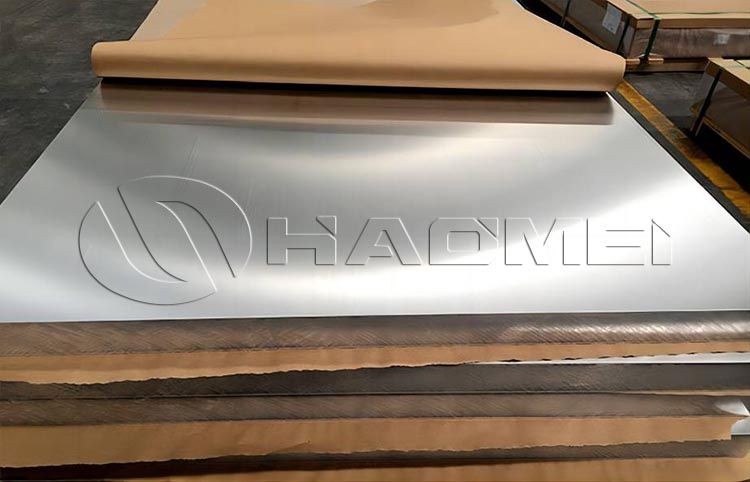
Address: No.14 Waihuan Road, CBD, Zhengzhou, China
Tel: +86-15978414719
Fax: +86-371-65621393
Mail: sale@alumhm.com
Time:2025-08-01
It refers to aluminum sheets with a thickness between 0.2mm and 6.0mm. Its biggest advantage is its lightness, which is of great significance to the aviation industry, which pursues lightweight to reduce energy consumption and improve flight performance.
In aircraft manufacturing, the thin aluminum sheet is mainly used for the skin of the fuselage and wings. As the "outer coat" of the aircraft, the fuselage skin is directly subjected to air flow friction and external environmental erosion. With good formability, the thin sheet can perfectly fit the complex curved surface of the fuselage, create a smooth aerodynamic shape, and reduce flight resistance.

Common passenger aircraft such as Boeing 737 and Airbus A320 use a large amount of 2024 thin aluminum sheets for the fuselage skin. It is not only light in weight, but also has high strength and fatigue resistance, ensuring the structural integrity of the fuselage during frequent takeoffs and landings and long-term flights.
The wing skin is also critical, as it needs to withstand complex stresses such as bending and torsion during flight. 7075 aluminum alloy sheets are often used for the upper and lower skins of the wing due to their high strength and good toughness. For example, on some high-performance fighters, the wing skins are made of 7075-T6 sheets, which reduce weight while ensuring the structural strength of the wing, thereby improving the maneuverability and fuel efficiency of the aircraft.
In addition, some structural parts inside the aircraft, such as cabin partitions and ceilings, also use aluminum alloy thin plates. Although these parts do not bear the main load, they are sensitive to weight. Thin plates can effectively control the overall weight of the aircraft on the basis of meeting structural requirements.
In addition, the good conductivity and processability of thin plates make it also have a place in the manufacture of shells for avionics equipment. It can not only provide protection for the equipment, but also facilitate electromagnetic shielding and ensure the stable operation of electronic equipment.
The thickness of the thick aluminium sheet is generally above 6.0mm. Unlike the lightness of thin plates, it has a strong load-bearing capacity and becomes a solid "skeleton" of aviation structures. In aircraft manufacturing, thick plates are mainly used to manufacture key components that bear high loads. For example, the wing beam of an aircraft, as the main load-bearing structure of the wing, needs to withstand huge bending and shear forces.
7050 aluminum alloy thick plate has the characteristics of high strength, high toughness, fatigue resistance, and damage resistance, and is an ideal material for manufacturing wing beams. The wing beams of the C919 large passenger aircraft use 7050 aluminum alloy thick plates. Through advanced processing technology, the wing beams are ensured to have sufficient strength and stability to support the entire wing and the huge load of the aircraft during flight.
The fuselage frame is also inseparable from thick plates, which are like human bones and provide overall structural support for the aircraft. 2219 thick aluminum plates are often used to manufacture fuselage frames because of their good welding performance and comprehensive mechanical properties. On large transport aircraft, the fuselage frame is welded with 2219 aluminum thick plates to build a solid fuselage structure to ensure that the aircraft can withstand the internal pressure of the fuselage and the external complex environmental stress when carrying cargo and passengers.
Some parts of the aircraft engine, such as mounting seats and load-bearing rings, are also made of aluminum alloy thick plates. The engine will generate huge thrust and vibration when working. These parts need to have extremely high strength and fatigue resistance. Thick plate materials can meet this stringent requirement and ensure stable and reliable operation of the engine.